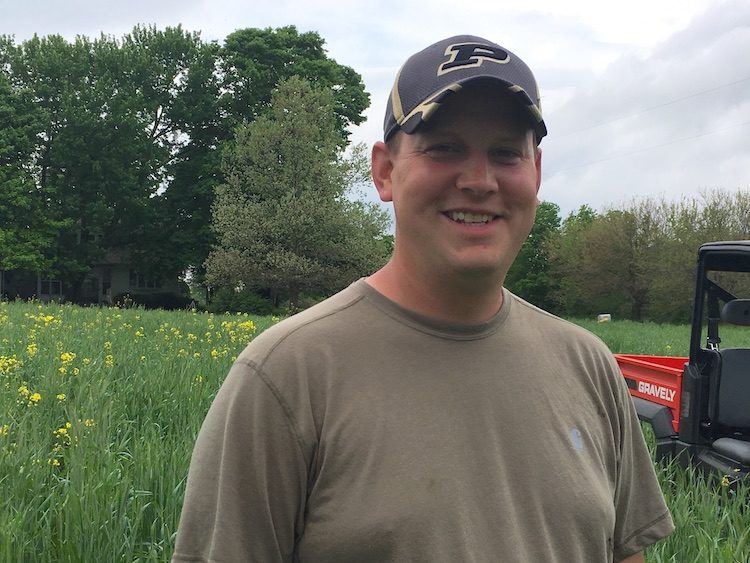Carter Morgan and his brother, Brent, farm 2,700 acres of corn and soybeans in western Indiana, alongside their father, Brian, and uncle Darrell. All of them except Carter live near the farm’s headquarters in Cayuga and the foursome tends to spend a lot of time together.
Under normal circumstances, they congregate at the shop, divvy up tasks, and get to work, reconvening at a local restaurant to eat lunch together. They back each other up and solve problems together.
Now, with Stay At Home orders in effect across the state, things are a little different. The Morgans are still working together, of course, but social distancing means interacting more over the phone or by text and eating lunch separately.
“Since the others live nearby, they just go home for lunch. I usually bring something from home and eat on the go,” says Carter.
While Carter misses the socializing, he’s mostly concerned about the economic impact the coronavirus pandemic is having on local businesses and rural areas in general. Vermillion County, where the Morgan farm is based, has only 2 confirmed cases of COVID-19 so far, Carter says, but local businesses are all taking precautions to prevent further spread.
Like many other farm equipment dealerships, the ones he frequents have stopped allowing customers to enter the store. Orders are made over the phone or online and customers are asked to call the dealership when they’re going to come get their merchandise. The dealerships then either brings the goods out to the customer or leaves it outside for pickup.
The stores that are open are doing their part to enforce physical distancing.
“I had to go get a fitting for tile today, and ended up going to a couple of stores,” he says. “There were Xs on the floor to keep people 6 feet apart and plexiglass at the cash registers. It’s just weird.”
Because there hasn’t been widespread illness in his area, he’s hesitant to point to any real problems thus far but he’s a little uneasy.
“Everyone’s doing their part to comply with the current situation,” he says. “And it’s not that I’m concerned exactly, but it’s kind of crazy to see how fast things are changing — almost by the minute. If anything, I’m most concerned about the financial impact this is going to have on small businesses. Small towns are in trouble as it is, they’re dying, and when businesses start getting shut down, there could be a really big impact.”
The other big impact for Carter is that his church, the Second Church of Christ in Danville, Ill., has shifted to virtual services, presenting via Facebook live or YouTube TV.
“It’s a big church and a lot of farmers go there,” Carter explains. “We always end up congregating and talking farm stuff.”
He misses the community bonding and the person-to-person contact.
“The virtual services just aren’t the same. It’s just me and my wife watching the screen at home.”
All the local farm meetings are cancelled as well, of course, as is the agronomy consulting he does for is local soil and water district.
“I’m still taking some phone calls here and there but as far as on-farm visits go, that’s all on hiatus.”
So the Morgans, like most farmers, are focusing on getting ready to plant. They’ve had mild weather for the past few days and not too much rain, so Carter is optimistic about getting some seed in the ground soon. He and Brent laid just over a mile of tile the other day and his dad was out spraying the 460 acres that didn’t get seeded to cover crops last fall.
“We’re watching the situation, and doing our best to keep ourselves isolated to make sure we don’t contract the virus. But this is the busy time of the year and we need to get stuff done,” says Carter. “It’s kind of nice to have something to focus on — it prevents me from watching the news or getting on social media too much.”
At the moment, Carter says their cropping plans haven’t changed, but he’s keeping an eye on commodity prices and may make some minor adjustments if corn prices get too low.
“We’re close to a 50/50 rotation with corn and soybeans, but we were a little heavy on corn last year so we were planning to do about 50-100 acres of corn-on-corn to even things out,” he says. “We’d rather plant the corn, though, and if corn goes back to about $4, we’ll plant the corn. But if corn goes to $3 and beans are $9-10, it’s a pretty easy decision to plant those acres to beans.”







